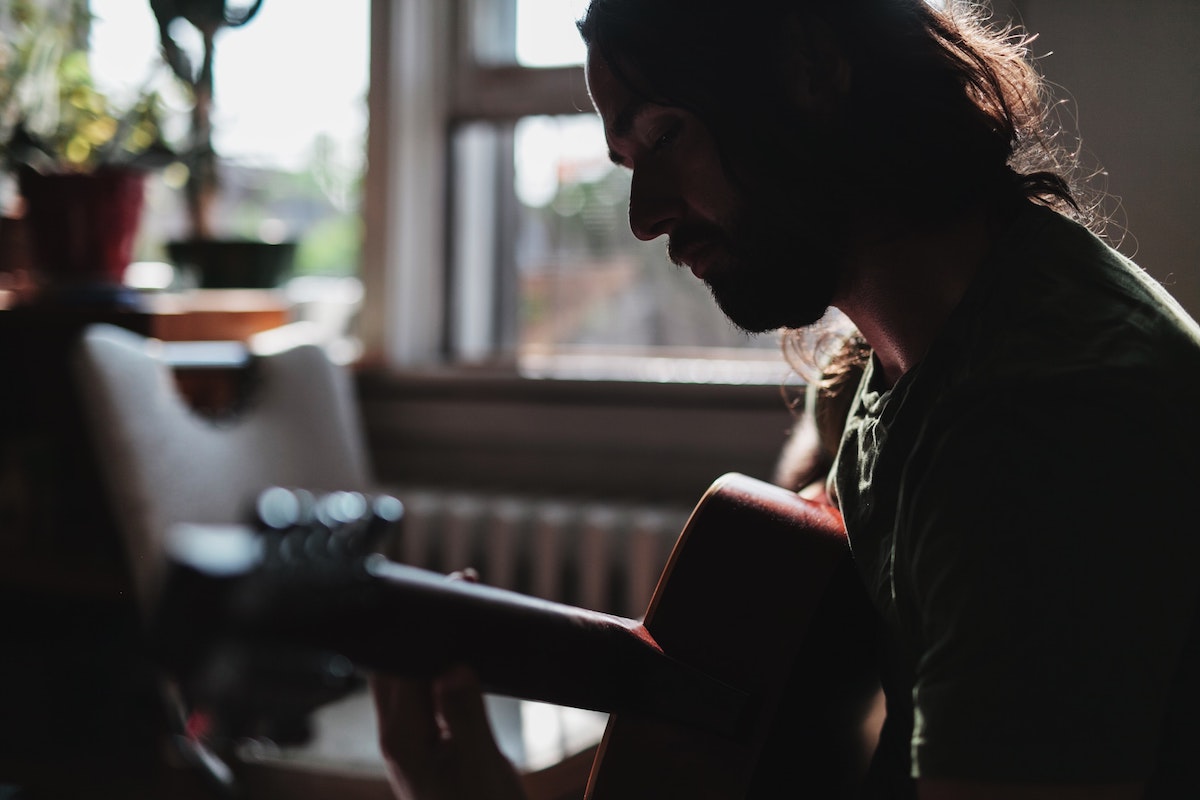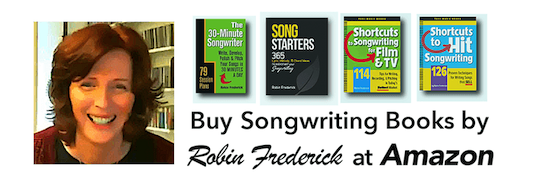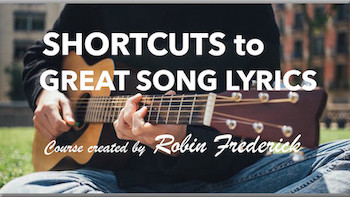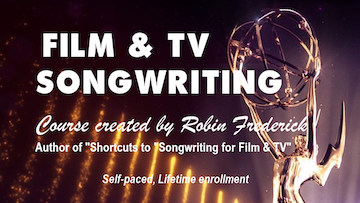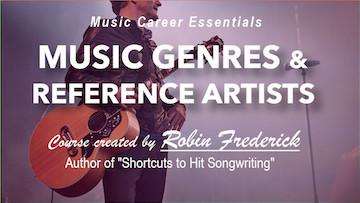You can draw a straight line from Joni Mitchell’s Blue album, the intimate vocals of Tim Hardin, and the floating melodies of Nick Drake to the compelling sound of today’s Singer-Songwriter genre.
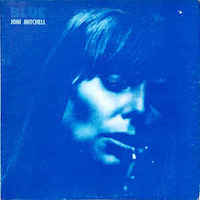
Indeed, the Singer-Songwriter genre has been around for decades, yet no one seems able to describe exactly what it is. We might agree that Dermot Kennedy, Sheryl Crow, Novo Amor, and Ingrid Michaelson are all singer-songwriters, but they all sound very different. What does the Singer-Songwriter genre sound like? And how do you know if you’re in it? Why is that important?
Music genres are a shorthand way to tell listeners and the music industry what your songs sound like.
When you know your genre…
▪ Record labels will know whether they can market you.
▪ Music publishers will know how to pitch your songs.
▪ Playlisters will know if you’ll appeal to their listeners.
▪ Listeners will know if your music is in a style they like.
All of these decisions will be made quickly based on your genre.
So, what is the Singer-Songwriter genre?
The Singer-Songwriter genre covers a wide range of musical styles, making it hard to define. It sometimes sounds like Pop. At other times it sounds more like Folk. Sometimes it doesn’t sound like either one. So, what is it?
Well, now I’m going to weasel out of giving you a straight answer. Singer-Songwriter itself is not a genre at all. It’s a sub-genre that stretches all the way from the Pop music charts to traditional Folk. Along the way, it checks the boxes for Alt Country, Americana, and even flirts with Electro Chill. (Check out artists like Henry Green, James Blake, or Talos.)
You’ll find Singer-Songwriter listed under more well-defined genres like Pop and Folk in Film & TV music libraries, song contests, and anywhere you browse by genre. But even with such a huge sonic horizon, Singer-Songwriter is still easily recognizable, therefore we often refer to it as a genre. It’s truly the ultimate “you-know-it-when-you-hear-it” genre.
So, how do you deal with that? When a medium-sized record label president says she’s looking for singer-songwriters to sign, or that music publisher is seeking chart-topping Singer-Songwriter songs for an established Pop artist, how do you know if they mean you?
Six ways to identify the Singer-Songwriter genre
ONE: A singer-songwriter is a solo artist
A singer-songwriter is a solo artist, not a band. That should be obvious but the lines are often blurred. A successful band like Amber Run has a lead vocalist who also writes the songs. If that sounds like you, I suggest that you do not pitch to a label looking for solo artists. Fans expect a singer-songwriter to be front-and-center at all times. They feel a personal connection with the artist. A backup band may be part of the tour, but if the musicians change, the fans probably won’t even notice.
TWO: The singer is the songwriter
Another obvious point: the singer should also be the songwriter. But this can be a blurry area, too. Is Adele a singer-songwriter? She certainly started out that way with songs like “Daydreamer.” But she always collaborated on her hit singles and now collaborates on every song on her albums. So, does that make her a singer-songwriter or Pop Superstar who co-writes, like Beyoncé? And I would ask the same question about Ed Sheeran. We’ll come back to this later.
THREE: The lyrics offer fresh insights
Singer-songwriter songs don’t stay on the surface. The language offers listeners a different way to perceive things or a new angle on something familiar. If you use a cliché be sure to turn it inside out to give it a new meaning.
The lyrics are also emotionally revealing and reflect personal experience. Even if you’re not writing about something that actually happened to you, it sounds like you are. A good singer-songwriter is deeply immersed in whatever situation or emotion they’re writing about, looking for ways to express what it feels like. Lyrics are often filled with personal revelations, giving them a confessional feel as if the songwriter is expressing the most intimate parts of their lives.
FOUR. The music supports the lyric emotionally
Because lyrics are featured in the Singer-Songwriter genre, the music—melody, chords, and rhythm groove—needs to offer strong support, underscoring the emotion in the lyric and adding more impact.
In “Someone You Loved,” Lewis Capaldi uses repeated melody phrases throughout his verse and chorus to build tension as the song moves along (“Somebody to heal / to know / to have / to hold”). The melodic repetition makes the list feel longer and the need greater. The high stretch of the melody in the bridge adds a big emotional peak at the moment when the singer admits he still dreams of being with his lover. This is a great example of a melody that adds to and supports the emotional feel of the lyric.
FIVE: The production features a songwriter instrument
In the production, the Singer-Songwriter genre often features the instrument that the song was written on (or might have been written on). The listener wants to feel as if they’re hearing the songwriter playing and singing the song just as they originally wrote it. A sense of connecting with the artist’s initial inspiration for the song is crucial to making this style work.
For that reason, a Singer-Songwriter production will generally feature piano or guitar (acoustic or electric) because those are the instruments we associate with songwriters. (It’s hard to write a song if you’re playing the trumpet. Of course, I’m not saying you couldn’t.)
The piano or guitar might be the only instrument accompanying the singer, especially in the opening verse. As the song moves along, it can be supported with drums, bass, more guitars, synth pads, strings, etc. You can make it Pop, you can make it Chill, you can make it Folk or whatever you want, but the featured songwriter instrument should clearly sound like it’s accompanying the singer. This is a hallmark of the Singer-Songwriter style.
SIX: The vocal has presence
In this style, vocals are not squashed with compression, reduced to a pocket at the center of a large instrumental arrangement as they are in mainstream genres like Dance and Pop. Instead they take up a wider space in the stereo field and are often placed just in front of (but not apart from) the accompaniment.
This places the singer front and center, allowing the listener to hear every nuance, which is just what this style needs. The listener should be able to relate to the singer as a person through their voice.
Reference artists
If you’re still not sure whether you’re writing in the Singer-Songwriter genre, look for artists you think are similar to you. If they’re considered singer-songwriters then you probably are, too.
You can use these artists to show a music producer what your want or keep your own home studio productions on track in terms of the sound of this style. Reference artists can also help you solve problems when you get stuck.
Read more about finding and using reference tracks and artists.
So, about Adele and Ed
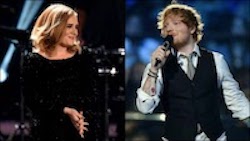
Back to my question about Adele and Ed Sheeran. Even though they collaborate with other songwriters on all their latest releases, and the productions are much larger and more polished than most singer-songwriter projects, in the music industry they’re still thought of as singer-songwriters. That’s likely because they started out that way. Adele was the sole writer on six out 12 songs on her debut album. Ed Sheeran was the sole writer of his debut hit single “The A Team.”
Starting out as a singer-songwriter is a great way to lay the groundwork for a successful artist career. Compared to the big mainstream genres, the Singer-Songwriter style is cheaper to produce, it shows off your writing and vocal chops, and listeners love it which makes it easier to market. Plus, like Adele and Ed, no matter what you do later, you’ll always be known as a singer-songwriter.
Why do singer-songwriter songs work so well for Film & TV?
This genre is tailor-made for the Film & TV market. The focus on emotion rather than storyline in the lyrics keeps it out of the way of whatever the script and characters are doing. In addition, the music underscores the feeling in the lyric, so it’s likely to provide good support to a scene that features a similar emotion.
The vocal is another plus because a song lyric can say what scripted characters often can’t; it might sound awkward, unnatural, or overly melodramatic when spoken. And just like the actors in a scene have to be believable, the singer-songwriter vocal has to have an emotionally authentic vibe. In some cases, it can even be used to add another, unseen, character to the scene, providing insight into the characters or the action.
– Try It Now –
Listen to some of the songs you’ve written to see if they meet the criteria for the Singer-Songwriter genre. If not, consider adding more personal revelation to the lyric, a more supportive melody, or a new arrangement that will bring it more into line.
Want to learn more about genres? Sign up for my self-paced course Music Genres and Reference Artists for only $15. Or get it free when you sign up for Shortcuts to Great Song Lyrics.
